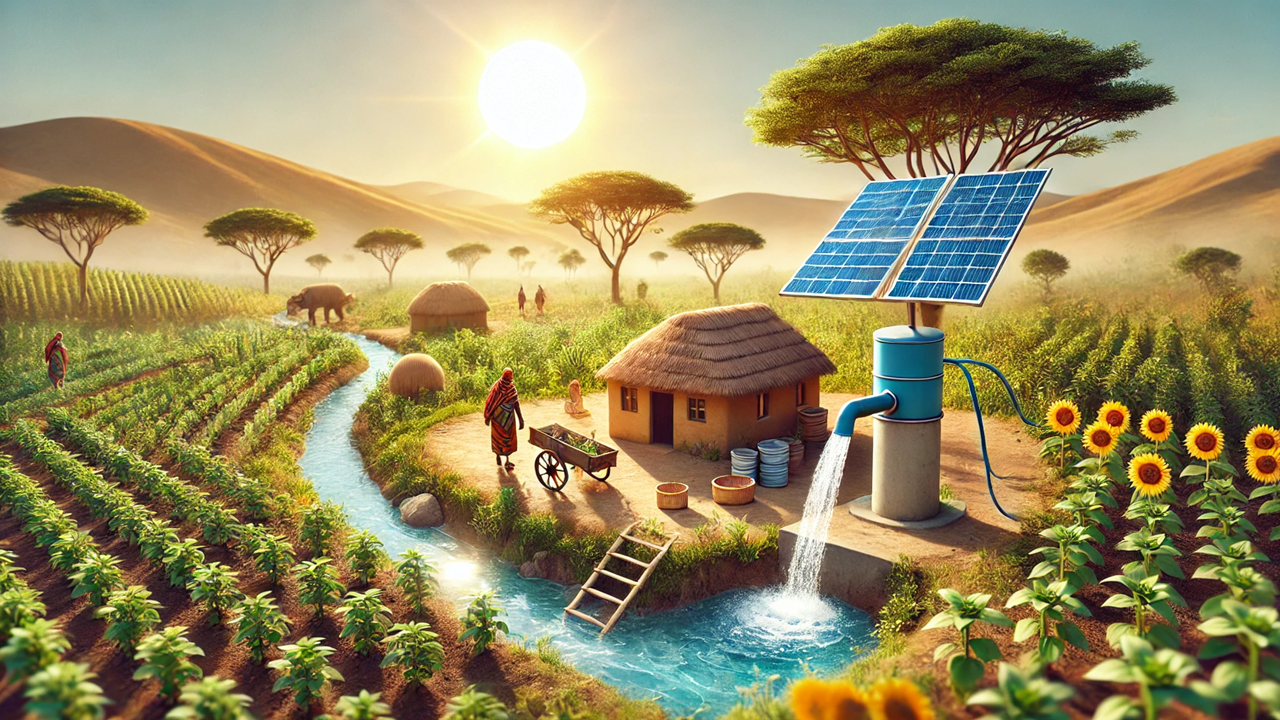Solar Water Pumping in Africa: Promise and Peril for Groundwater Ecosystems
The recent World Bank study, "Mapping the Risk Posed to Groundwater-Dependent Ecosystems by Uncontrolled Access to Photovoltaic Water Pumping in Sub-Saharan Africa," highlights the dual-edged potential of photovoltaic (PV) water pumping systems. While these systems could revolutionize water access and agricultural productivity, they pose a severe risk to groundwater-dependent ecosystems (GDEs) if not managed properly. The research underscores the need for regulation and monitoring to balance development needs with environmental sustainability.

A Sustainable Solution at Risk
Photovoltaic (PV) water pumping technology has the potential to revolutionize water access in Sub-Saharan Africa, providing a sustainable and cost-effective way to meet growing water demands in regions with scarce resources. However, a recent World Bank report, "Mapping the Risk Posed to Groundwater-Dependent Ecosystems by Uncontrolled Access to Photovoltaic Water Pumping in Sub-Saharan Africa," warns that without proper regulation, this innovative technology could severely damage the ecosystems that rely on groundwater. The report highlights a critical challenge: the urgent need for a balanced approach that marries development with environmental sustainability.
Photovoltaic water pumping systems harness solar energy to extract groundwater, providing vital irrigation to farmlands and potable water for underserved communities. However as the study outlines, the uncontrolled expansion of this technology could lead to over-exploitation of groundwater resources, placing fragile groundwater-dependent ecosystems (GDEs) in peril. These ecosystems play a crucial role in supporting both biodiversity and the livelihoods of rural populations across Sub-Saharan Africa. The need for regulation and oversight is paramount to prevent long-term ecological damage.
Assessing the Threat to Groundwater Ecosystems
The study uses the Analytic Hierarchy Process (AHP) to assess the risks posed by photovoltaic water pumping. By analyzing various factors—such as solar irradiance, groundwater availability, population density, and the distribution of GDEs—the report estimates that 92% of GDEs in Sub-Saharan Africa are at high risk of overexploitation if solar pumping systems are deployed without adequate controls.
The regions most at risk include Southern and Eastern Africa, particularly Namibia and South Africa, where the combination of high solar irradiance and limited groundwater resources increases the vulnerability of GDEs. On the other hand, countries like Gabon, Congo, and southern Nigeria have a lower risk due to more favorable environmental conditions, such as higher groundwater levels and less dependence on these ecosystems.
This geographical disparity points to the need for targeted investments and monitoring systems to ensure that photovoltaic water pumping systems are implemented responsibly. For instance, regions with high groundwater development needs but lower ecological risks—such as southern Nigeria and South Sudan—should be prioritized for PV water pumping system investments. Conversely, in regions like Namibia and South Africa, where GDEs face greater risk, strict groundwater monitoring and regulatory safeguards should accompany any new solar water infrastructure.
The Path Forward: Sustainable Expansion
The potential benefits of solar-powered water pumping in Sub-Saharan Africa are undeniable. With over 600 million people lacking access to electricity and 400 million lacking clean water, photovoltaic systems could offer a transformative solution to these twin challenges. In regions where agricultural productivity is low due to limited irrigation, solar pumping could drastically improve food security and economic stability. However, the report emphasizes that these gains must not come at the cost of degrading essential ecosystems.
Groundwater-dependent ecosystems are not only vital for biodiversity but also provide socio-economic benefits, including supporting the livelihoods of pastoralist communities and acting as natural carbon sinks. The degradation of these ecosystems would exacerbate environmental challenges, including water scarcity, soil degradation, and increased greenhouse gas emissions. The report, therefore, calls for a balanced approach, where investments in solar technology are paired with robust policies that protect groundwater reserves and ensure the long-term viability of both water resources and ecosystems.
A Call for Careful Management
As solar technology advances and becomes more affordable, Sub-Saharan Africa is poised for a water and energy revolution. But as the World Bank report shows, with great potential comes great responsibility. Policymakers must ensure that investments in photovoltaic water pumping systems are guided by a clear understanding of their environmental impacts. Strategic planning, stringent monitoring, and international cooperation will be essential to harness the power of solar energy while safeguarding the region’s vital groundwater ecosystems.
Balancing development and sustainability will be key to ensuring that the promise of photovoltaic water pumping does not become a peril to the region’s most vulnerable ecosystems. With the right approach, Sub-Saharan Africa can lead the way in utilizing renewable energy to address pressing water needs without compromising its natural heritage.
- FIRST PUBLISHED IN:
- Devdiscourse
ALSO READ
Sub-Saharan Africa's Path to Economic Reform and Growth
India, EU have common interest in ensuring security, prosperity, sustainable development in multi-polar world: India-Germany joint statement.
Sitharaman Advocates Global Debt Dialogue for Sustainable Development
Africa Gears Up for the 10th UN Geospatial Information Session, Focusing on Disaster Resilience and Sustainable Development
Steering Sustainable Development: Sa-Dhan's National Conference on Inclusive Finance










